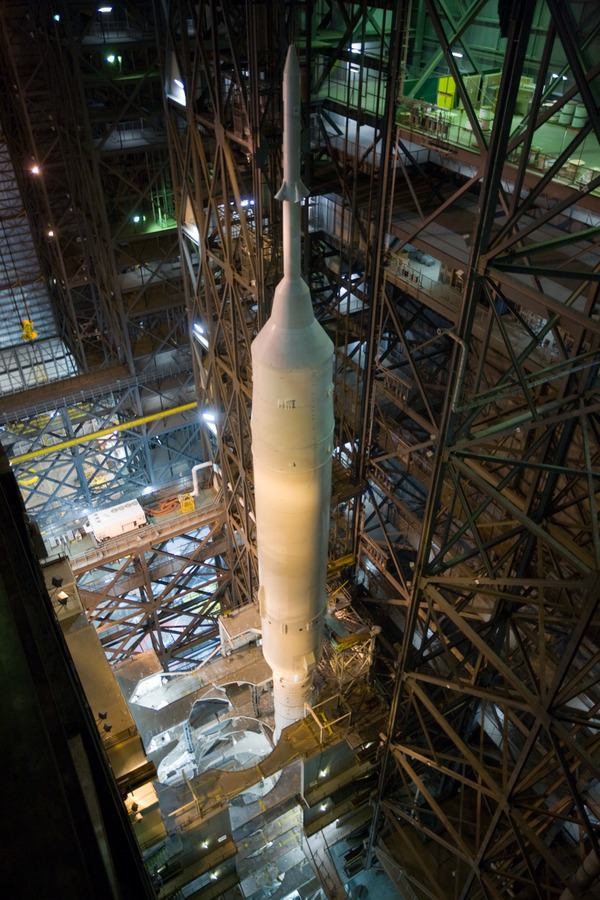[/caption] For the first time in more than a quarter-century, a new space vehicle stands ready in NASA's Vehicle Assembly Building. But will it fly without violent vibrations, and what verdict will the Augustine Commission give the Constellation program? Only time will tell, but for now the Ares I-X is at its fully assembled height of 100 meters (327 feet) and is one of the largest rockets ever put together in the VAB's High Bay 3. Ares I-X rivals the height of the Apollo Program's 364-foot-tall Saturn V. The Ares I-X flight test currently is targeted for Oct. 31. Ares I-X consists of a four-segment first stage solid rocket motor, and a simulated upper stage that represents the weight and shape of the Ares 1 rocket and Orion crew vehicle. It will be launched in a suborbital arc into the Atlantic to collect data on its flight dynamics and parachute recovery performance.
The flight of the unpiloted Ares I-X will be an important step in confirming that the rocket design is safe and stable in flight before piloted flights of Ares I begin in the middle of the next decade.
But -- even before the launch of Ares I-X -- a critical series of ground tests will take place to confirm that the vehicle's dynamic response will respond to launch loads and vibrations the way that computer analytical models have predicted it will respond.
"While we are confident in the predicted model results and simulations, these ground tests are critical because we have no experience launching rockets as long and slender as Ares I-X," according to Paul Bartolotta, Ares I-X Modal Test Lead who is responsible for leading a NASA-wide Modal Test Team from his office at NASA's Glenn Research Center, Cleveland, Ohio.
[caption id="attachment_37471" align="aligncenter" width="580" caption="Saturn V, Ares I-X and Delta IV. Credit: NASA"]
[/caption] With its height and average diameter of approximately 4 meters (14 feet), Ares I-X has a high "slenderness ratio" compared to other launch vehicles. The similarly-shaped Delta IV, for instance, is about 5.2 meters (17 feet) in average diameter and 69 meters (225 feet) long. The Saturn V was about 10 meters (33 feet) in average diameter and 111 (363 feet) in length.
Due to its long slender shape, the Ares I-X is unique from a flight dynamics standpoint.
"We're going to be shaking the vehicle to make sure our structural models match the actual vehicle characteristics," said Kurt Detweiler, Ares I-X Lead Systems Engineer, based at NASA Langley. "This is important for determining how the vehicle will respond during flight. If the vehicle doesn't match the analytical model, its guidance, navigation and control systems will be off," he added.
A series of sensors strategically located throughout the stacks will measure the amount and direction of movement, as the shakers impose random loads to determine the rocket segment's first several bending modes. A comparison will be made between predicted and measured mode shapes to verify the Ares I-X flight dynamics model.
Sources:
NASA on Facebook
,
NASA
 Universe Today
Universe Today
